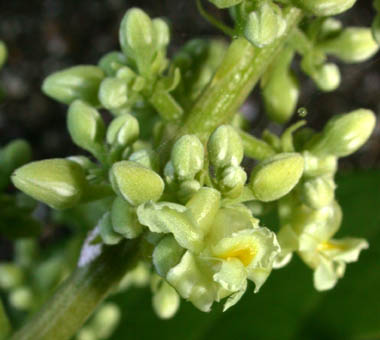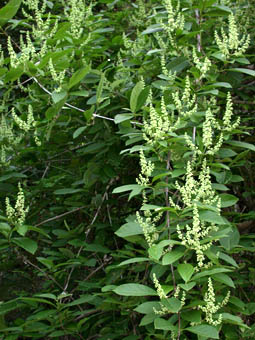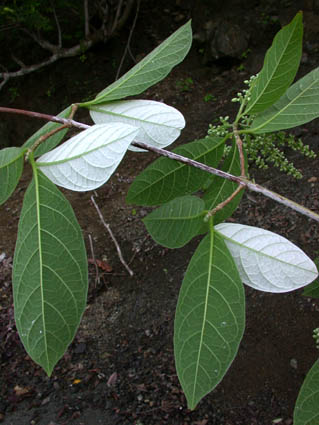 |
QUICK SEARCH
MO PROJECTS:
Africa
Asia/Pacific
Mesoamerica
North America
South America
General Taxonomy
Photo Essays
Training in Latin
America
MO RESEARCH:
Wm. L. Brown Center
Bryology
GIS
Graduate Studies
Research Experiences
for Undergraduates
Imaging Lab
Library
MBG Press
Publications
Climate Change
Catalog Fossil Plants
MO DATABASES:
W³MOST
Image Index
Rare Books
Angiosperm
Phylogeny
Res Botanica
All Databases
INFORMATION:
What's New?
People at MO
Visitor's Guide
Herbarium
Jobs & Fellowships
Symposium
Research Links
Site Map
Search
|
Draft Treatments | Guidelines | Checklist | Citing | Editors The Cutting EdgeVolume IX, Number 3, July 2002News and Notes | Recent Treatments | Leaps and Bounds | Germane Literature | Season's Pick SEASON'S PICK: Trigonia rugosa Benth. (Trigoniaceae) 


Trigonia rugosa, one of ca. 28 species in a neotropical genus of woody vines, is the most wide-spread species (Mexico to Colombia) and by far the most often-collected of the two in Costa Rica, as elsewhere (cf. Flora de Nicaragua, 2000). Here it is restricted mostly to dry and moist forest of the Pacific slope, reaching the Caribbean slope only in the far north. It appears to be quite seasonal, flowering (according to specimens at INB) mostly during the present (i.e., early rainy) season; ca. June--August. We have for years been wanting photos of either species in flower, and finally got some (vouchered by Hammel & Pérez 22552) while exploring on rocky cliffs at Herradura, just west of the marina of the large new hotel there with its white-sand simulacro-beach: white, like the underside of the leaves of Trigonia rugosa. Vegetatively, these plants could easily be mistaken for a species of Malpighiaceae (both have opposite leaves, interpetiolar stipules, and T-shaped hairs). The brilliantly white lower leaf-surface helps, but not all Trigonia spp. nor even all specimens of T. rugosa exhibit this feature...! Most malpighiaceous lianas have rather conspicuous petiolar or abaxial glands on the leaves, lacking in Trigonia rugosa. The small, somewhat beanlike flowers, 3-lobed, capsular fruits and seeds with long orange hairs make for a unique combination. Trigoniaceae, a small family of 4 genera and perhaps 30 spp., can be considered sister to Dichapetalaceae in the order Malpighiales. For further enlightenment, see Peter F. Stevens's web site: Photo credits to Barry Hammel. |
© 1995-2025 Missouri Botanical Garden, All Rights Reserved
4344 Shaw Blvd.
St. Louis, MO 63110
(314) 577-5100
Technical Support